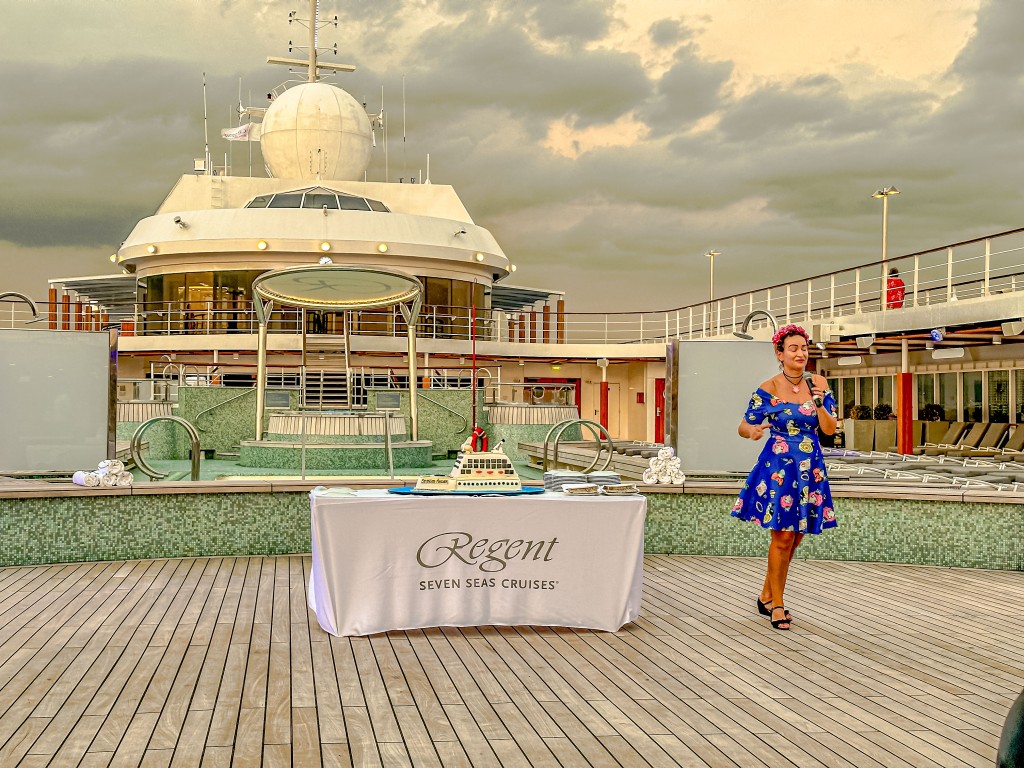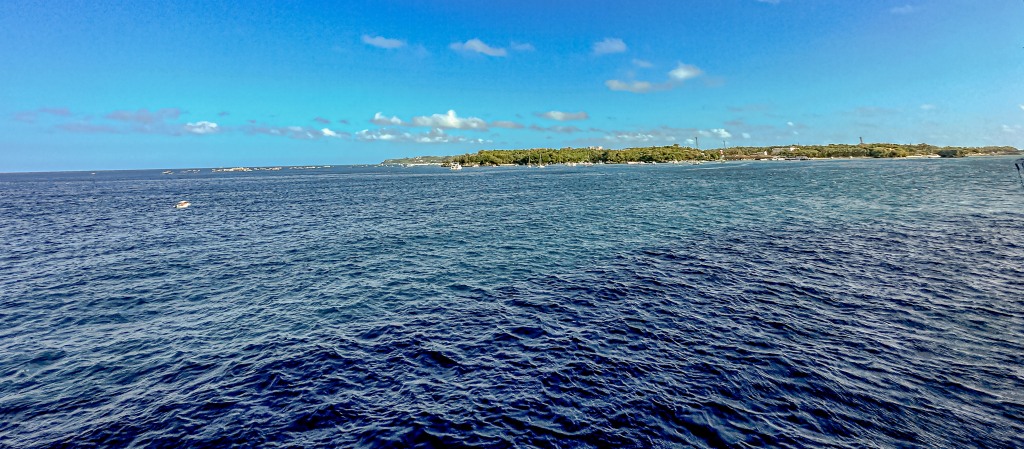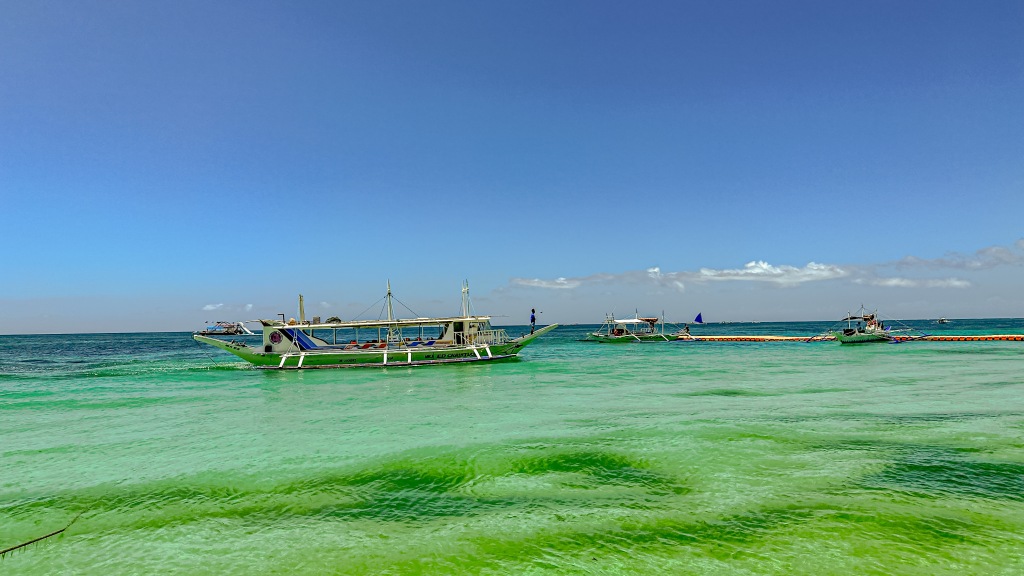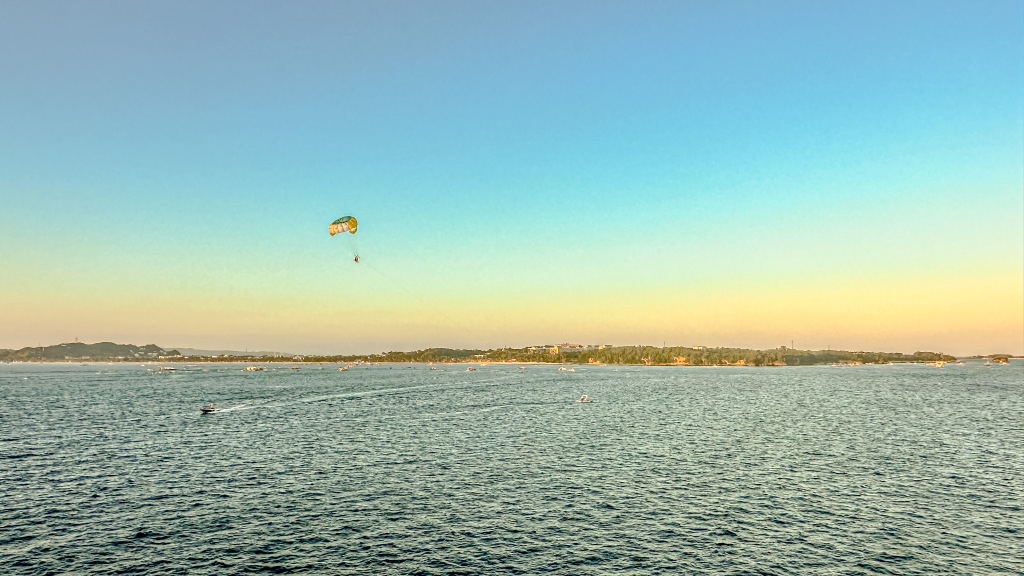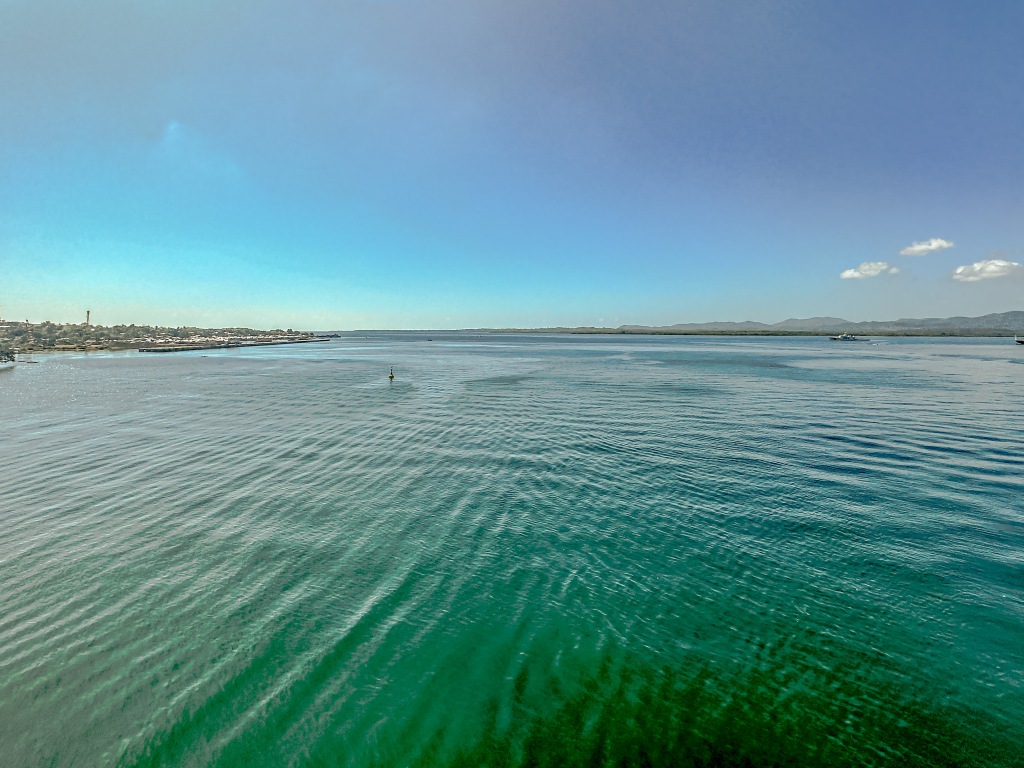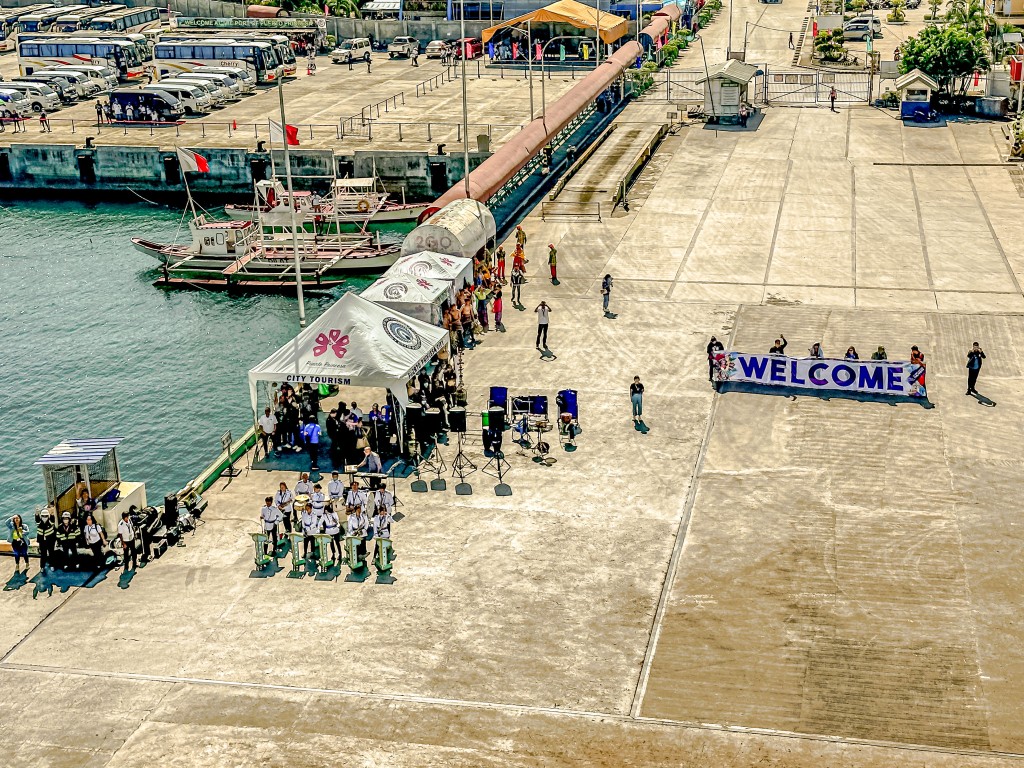March 9, 2023:

Early this morning, we sailed past the island of Corregidor, site of some of the bloodiest battles in the south Pacific during World War II. We pulled into the bay of Manila and docked right in the center of town. It’s a big crew changeover day, as the majority of our crew onboard are from the Philippines. In fact, I think it is safe to say that the cruise industry could not stay afloat without the thousands of Filipinnos staffing the ships! It’s also a sad day for a couple of crew members, as their families are disembarking here. But also a joyous one, as numerous staff returned home and are greeted by the families at the docks!

The Philippines are officially the Republic of the Philippines. In total there were about 7641 islands The total area of the country is about 300,000 km² and it has a population of about 109 million people. Manila is the country’s capital, and one of its suburbs, Quezon City, is the largest city in the country. Both are located on the northernmost island of Luzon.

The oldest human remains were found on the in the Tabon caves on the island of Palawan, and have been dated to about 47,000 years ago (plus or minus 10-11,000 years). These people were part of the first human migrations out of Africa along the coastal route of southern Asia, much like the rest of Oceania.
The first Austronesians reached the Philippines from Taiwan in about 2200 BC, settling in the Batanas islands in northern Luzon. It is believed those peoples head trading relationships with the peoples of Taiwan as early as 2000 BC by 1000 BC the inhabitants of the archipelago who developed and four kinds of social groups: hunter-gatherer tribes, warrior societies, highland plutocracies, and port principalities.
Trade with China is believed to have begun during the Tang dynasty (600 to 900 A.D.). The southernmost islands were influenced by Indian cultural traits which had spread between the southernmost islands during the 14th century, likely through the spread of the Hindu Majapahit empire. By the 15th century, Islam was established in the Sulu archipelago and spread from there.The first contact with the western world came with the landing of Magellan’s Expedition, he arrived in 1521 and claimed the islands for Spain. However, he was then killed by a warring tribe under chief Lapulapu, at the battle of Mactan.
Nonetheless, Spanish colonization began when explorer Miguel Lopez de Legazpi arrived from Mexico in 1565, and most of those who arrived with him were either Spaniards or Mexicans from the New World. Legazpi established Manila as the capital of the Spanish East Indies, which encompassed Spanish territories in Asia and in the Pacific in 1571, and ordered the construction of the Intramuros (the wall city) to protect the capital. The Spanish successfully invaded different local states, and succeeded in bringing most of the Philippines into a single unified administration. The Catholic missionaries arrived soon afterwards, and since the Spaniards had divided and conquered the various tribes, the missionaries found it easier to convert the native Filipinos to Christianity. Manila was the western hub of the Transpacific trade. However, Spain did not find its rule over the Philippines to be easy or cheap. Not only did they have to quell numerous uprisings among the native Filipinos, but they also had to fight a battle with the Dutch who attacked them from the west in the 17th century. Conflict with Muslims in the south of the territory also added to the costs and troubles for the Spanish. So much so that administration of the Philippine islands was considered a drain on the economy of New Spain, and there were ongoing discussions about disbanding the Spanish colony entirely, or trading it for another territory. British forces even occupied the islands briefly from 1762 to 1764 during the Seven Years’ War, although the Spanish rule was restored in the 1763 treaty of Paris.
In the 19th century, Philippine ports opened to the world, and a shift started occurring within Filipino society. Part of this change was seen in the development of a national identity among those in all of the islands of the archipelago. The beginnings of a revolutionary movement started in 1872 after three activist Catholic priests who supported Philippine autonomy were executed by the Spanish government. There was a Philippine independence movement in Spain organized by Marcello del Pilar, Jose Rizal, Graciano López Jaena, and Mariano Ponce, lobbying for political reforms in the Philippines. Rizal was executed on December 30, 1896, on charges of rebellion, and that act radicalized many Filipinos, who had previously been loyal to Spain. As attempts at reform met with resistance, Andrés Bonifacio in 1892 established the militant secret society called the Katipunan, who sought independence from Spain through armed revolt. The Katipunan started the Philippines Revolution in 1896. Internal disputes led to an election in which Bonifacio lost his position, and Emilio Aguinaldo was elected as the new leader of the revolution. However, in 1897, the pact of Biak Na-Bato caused Aguinaldo to be exiled to Hong Kong in 1898. The Spanish American war began and reached the Philippines. Aguinaldo returned to the Philippines, resumed the revolution, and declared independence from Spain on June 12, 1898. The first Philippine Republic was established on January 21, 1899.
However, in settlement of the Spanish American war, the islands were ceded by Spain to the United States, along with Puerto Rico and Guam. When it became clear that the Americans would not recognize the First Philippine Republic, the Philippine American war broke out the war, resulting in the deaths of approximately 250,000 to 1,000,000 civilians, mostly because of famine and disease. Many Filipinos were also moved to the Americas to concentration camps, where thousands died. After the defeat of the First Philippine Republic in 1902 an American civilian government was established to the Philippine Organic Act. American forces continued to secure and extend their control over the island.
However, the movement for Philippine nationalism continue to grow, and in 1935, the territory was granted commonwealth status with Manuel Quezon as president, and Sergio Osmeña, as vice president, with a promise that the Philippines would be granted its independence in 1945. Quezon’s priorities were defense, social justice and equality, and economic diversification, as well as the establishment of a national character. Tagalog was designated as the national language, women’s suffrage was introduced, the need for land reform was mooted by legal changes.
Unfortunately, on December 8, 1941, the Japanese invaded the Philippines, because the American air forces were severely depleted by the attack on Pearl Harbor and could not defend it. The American Asiatic fleet in the Philippines was forced to withdraw to Java. On December 12, 1941, General Douglas MacArthur was ordered out, leaving his men at on the island of Corregidor on 9 March 11, 1942. The defenders of Bataan held out as long as they could, but finally the 76,000 starving and sick American and Filipino defenders surrendered on April 9, 1942 and were forced to endure the infamous Bataan death march during which 7 to 10,000 died or were murdered. The 13,000 defenders in Corregidor finally surrendered on May 6, 1942. Japan occupied the Philippines for over three years until the surrender of Japan. However, a highly effective guerrilla campaign by the Philippine resistance forces controlled 60% of the islands, mostly in the forested and mountainous areas. MacArthur supplied them by submarine, and sent in reinforcements and officers. The Filipino population remained generally loyal to the United States, partly because of the American guarantee of independence, and partly because of the Japanese mistreatment of the Filipinos.
MacArthur kept his promise to return to the Philippines on October 20, 1944. He landed on the island of Leyte, and was accompanied by a force of 700 vessels and 174,000 men. Those troops fought through December, 1944 to clear the islands of Leyte and Mindinao. During the campaign, the Imperial Japanese Army conducted a suicidal defense of the islands. Cities such as Manila were reduced to rubble. It is estimated that about 500,000 Filipinos died during the Japanese occupation.
Over 100,000 people lost their lives in the Battle of Manila, which began Feb. 3, 1945, when the Japanese gave an order to kill all civilians. The Philippines were liberated by Mar. 1945. On October 11, 1945, the Philippines became one of the founding members of the United Nations.
Although the Americans initially resumed control over the islands after World War II was over, they did follow through on their agreement to grant the archipelago independence, and on July 4, 1946, the islands were handed over to the Filipino people. As an interesting side note, my father was there with United States Army, and broadcast the handover ceremonies and celebrations on Armed Services Radio on that day. I’ve seen the pictures, and it was a very joyous day.
Upon arrival in Manila Harbor, Jim and I disembarked, and since we had no planned activities until the afternoon, we decided to walk around the port area and investigate the Intramuros area initially established by the Spaniards when they colonized the Philippines.


As it’s typical of the Philippines, it was hot and humid that day, and we walked along the outer walls of the Intramuros area, which were the former walls of the city of Manila. Today, the area between where the wall ends, and what was the ocean is now a municipal golf course, and we saw many Filipinos out enjoying an early round of golf during our walk. Over the centuries, the area outside the walls has been filled in with land, and the port area built up around it.


Jim and I walked around to one of the many entrances in the wall and walked inside, we saw some of the notable landmarks still standing, including the predominant Catholic church from the colonial period, St. Augustin’s Catholic Church, where Legazpi was buried.





Then we hired a taxi who took us to Chinatown and it was incredibly busy and bustling. As usual, I was in the hunt for a silver charm, and although there were numerous jewelry stores present, they all seemed to be selling gold jewelry.

After wandering them around for a bit, Jim and I returned to the cool air-conditioned environment of the ship to recharge our batteries. We had had a tour scheduled for the afternoon, but when we learned that it was going to go to many of the same areas we had just walked to that morning, we handed in our tour tickets and decided to go to a local mall, which would take us in a different direction than we traveled in the morning. In particular, it took us past the independence flag pole, which celebrates Philippine Independence Day ((July 4th), the same as that of the United States. There was also has a huge statue to founding father, Jose Rizal.


The Manila downtown area is incredibly built up, with sophisticated looking with high-rises full of office buildings and luxury apartments. The mall we went to had numerous international brands represented in it. Of course, I was looking for a charm, which I found in the form of an eagle, the Philippine national bird.


Mission accomplished, we returned to the ship and enjoyed the lovely sail away that evening.




We also celebrated the 23rd birthday of our ship, the Mariner, and had a great deck BBQ with Philippine dishes, and dancing. Stay tuned for in two days we will be in Hong Kong. The Gringos can barely wait!


